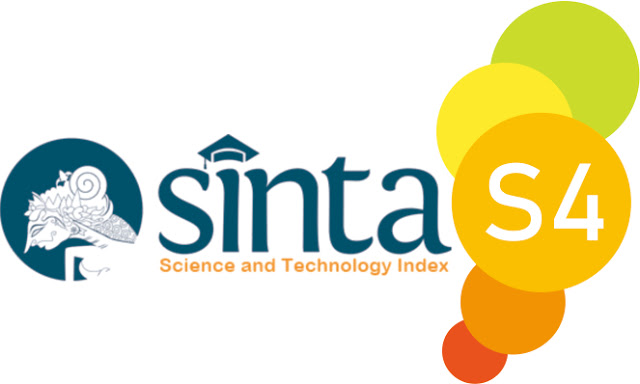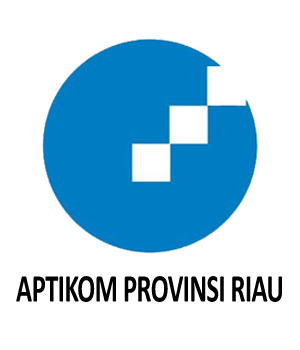Implementation of the K-Means Clustering Method for Selecting Pencak Silat Athletes at the North Sumatra KONI
Abstract
This article discusses the application of the K-Means clustering method in the selection of pencak silat athletes at the North Sumatra Koni. The study aims to improve the efficiency of the selection process, which was previously carried out manually, by classifying athletes based on attributes such as age, weight, and physical ability. K-Means clustering is used to group athletes into three categories: very suitable, suitable, and unsuitable. The methodology includes determining the number of clusters, calculating centroids, and analyzing Euclidean distances for data clustering. The results of the study showed that this method was effective in classifying 394 athletes in the "unsuitable" category, 354 athletes in the "suitable" category, and 376 athletes in the "very suitable" category. This study is expected to support the athlete selection process more systematically and efficiently. Recommendations for further research include the use of additional criteria and exploration of other clustering methods for more optimal results.
Downloads
References
Andini, Y., Hardinata, J. T., Purba, Y. P., Studi, P., Informasi, S., Utara, S., & Apriori, M. (2022). Penerapan Data Mining Terhadap Tata Letak Buku. Jurnal Technology Informatics & Computer System, XI(1), 9–15.
Debora Mait, C., Armando Watuseke, J., David Gibrael Saerang, P., Reynaldo Joshua, S., & Sam Ratulangi, U. (2022). Sistem Pendukung Keputusan Menggunakan Fuzzy Logic Tahani Untuk Penentuan Golongan Obat Sesuai Dengan. Jurnal Media Infotama, 18(2), 344–353.
Qasthari, M. W., & Kurniawan, R. (2024). Penggunaan Algoritma K-Means Clustering untuk Mengelompokkan Pemain Berdasarkan Gaya Bermain Pada Battle Royale Call of Duty Mobile. Future Academia, 2(3), 280-292. https://doi.org/10.61579/future.v2i3.177
Dinata, R. K., Safwandi, S., Hasdyna, N., & Azizah, N. (2020). Analisis K-Means Clustering pada Data Sepeda Motor. INFORMAL: Informatics Journal, 5(1), 10. https://doi.org/10.19184/isj.v5i1.17071
Ediyono, S., & Widodo, S. T. (2019). Memahami Makna Seni dalam Pencak Silat. Panggung, 29(3). https://doi.org/10.26742/panggung.v29i3.1014
Pane, P. P., Nasution, Y. R., & Furqan, M. (2024). Implementasi Data Mining dengan K-Means Clustering untuk Memprediksi Pengadaan Obat. Journal of Computer System and Informatics (JoSYC), 5(2), 286-296. https://doi.org/10.47065/josyc.v5i2.4920
Handoko, S., Fauziah, F., & Handayani, E. T. E. (2020). Implementasi Data Mining Untuk Menentukan Tingkat Penjualan Paket Data Telkomsel Menggunakan Metode K-Means Clustering. Jurnal Ilmiah Teknologi Dan Rekayasa, 25(1), 76–88. https://doi.org/10.35760/tr.2020.v25i1.2677
Syahrin, E., Santony, J., & Na'am, J. (2019). Pemodelan Penjualan Produk Herbal menggunakan Metode Monte Carlo. Jurnal KomtekInfo, 5(3), 33-41. https://doi.org/10.35134/komtekinfo.v5i3.29
Pilendia, D. (2020). Pemanfaatan Adobe Flash Sebagai Dasar Pengembangan Bahan Ajar Fisika: Studi Literatur. Jurnal Tunas Pendidik., 2(2), 1-10.
I Komang Setia Buana. (2020). Implementasi Aplikasi Speech to Text untuk Memudahkan Wartawan Mencatat Wawancara dengan Python. Jurnal Sistem Dan Informatika (JSI), 14(2), 135–142. https://doi.org/10.30864/jsi.v14i2.293
Ramadhan, R. S., Kurniawan, R., & Hasibuan, M. S. (2024). Clustering Daerah Rawan Angin Puting Beliung pada Kabupaten di Sumatera Utara dengan Algoritma K-Means. Jurnal Ilmiah KOMPUTASI, 23(2), 247-252. https://doi.org/10.32409/jikstik.23.2.3578
Nabila, Z., Rahman Isnain, A., & Abidin, Z. (2021). Analisis Data Mining Untuk Clustering Kasus Covid-19 Di Provinsi Lampung Dengan Algoritma K-Means. Jurnal Teknologi Dan Sistem Informasi (JTSI), 2(2), 100. http://jim.teknokrat.ac.id/index.php/JTSI
Mustika, M., Ardilla, Y., Manuhutu, A., Ahmad, N., Hasbi, I., Guntoro, G., Manuhutu, M. A., Ridwan, M., Hozairi, H., Wardhani, A. K., Alim, S., Romli, I., & Religia, Y. (2021). Data Mining dan Aplikasinya. Penerbit Widina.
Nofiyanti, E., & Oki Nur Haryanto, E. M. (2021). Analisis Sentimen terhadap Penanggulangan Bencana di Indonesia. Jurnal Ilmiah SINUS, 19(2), 17. https://doi.org/10.30646/sinus.v19i2.5
Primanda, R. P., Alwi, A., & Mustikasari, D. (2021). Data Mining Seleksi Siswa Berprestasi Untuk Menentukan Kelas Unggulan Menggunakan Metode K-Means Clustering (Studi Kasus Di Mts Darul Fikri ). Komputek, 5(1), 88. Https://Doi.Org/10.24269/Jkt.V5i1.686
Priyatman, H., Sajid, F., & Haldivany, D. (2019). Klasterisasi Menggunakan Algoritma K-Means Clustering untuk Memprediksi Waktu Kelulusan Mahasiswa. Jurnal Edukasi Dan Penelitian Informatika (JEPIN), 5(1), 62. https://doi.org/10.26418/jp.v5i1.29611
Suriani, L. (2020). Pengelompokan Data Kriminal pada Poldasu Menentukan Pola Daerah Rawan Tindak Kriminal menggunakan Data Mining Algoritma K-Means Clustering. Jurnal Sist. Komput. dan Inform., 1(2), 151. https://doi.org/10.30865/json.v1i2.1955
Nasution, M. Z., & Hasibuan, M. S. (2020). Pendekatan Initial Centroid Search untuk Meningkatkan Efisiensi Iterasi Klustering K-Means. Techno.Com, 19(4), 341-352. https://doi.org/10.33633/tc.v19i4.3875
Ratna, S. (2020). Pengolahan Citra Digital Dan Histogram Dengan Phyton Dan Text Editor Phycharm. Technologia: Jurnal Ilmiah, 11(3), 181. https://doi.org/10.31602/tji.v11i3.3294
Sulistiyawati, A., & Supriyanto, E. (2021). Implementasi Algoritma K-means Clustring dalam Penetuan Siswa Kelas Unggulan. Jurnal Tekno Kompak, 15(2), 25. https://doi.org/10.33365/jtk.v15i2.1162
Utomo, D. P., & Mesran, M. (2020). Analisis Komparasi Metode Klasifikasi Data Mining dan Reduksi Atribut Pada Data Set Penyakit Jantung. Jurnal Media Informatika Budidarma, 4(2), 437. https://doi.org/10.30865/mib.v4i2.2080
Yudhistira, A., & Andika, R. (2023). Pengelompokan Data Nilai Siswa Menggunakan Metode K-Means Clustering. Journal of Artificial Intelligence and Technology Information (JAITI), 1(1), 20–28. https://doi.org/10.58602/jaiti.v1i1.22
Fathoroni, A., Fathonah, N. S., Andarsyah, R., & Riza, N. (2020). Sistem Pendukung Keputusan Penilaian Kinerja Dosen Menggunakan Metode 360 Degree Feedback. Kreatif Industri Nusantara.
Wira, B., Budianto, A. E., & Wiguna, A. S. (2019). Implementasi Metode K-Medoids Clustering Untuk Mengetahui Pola Pemilihan Program Studi Mahasiswa Baru Tahun 2018 Di Universitas Kanjuruhan Malang. RAINSTEK: Jurnal Terapan Sains & Teknologi, 1(3), 53–68. https://doi.org/10.21067/jtst.v1i3.3046
Kusnadi, Y., & Putri, M. S. (2021). Clustering Menggunakan Metode K-Means Untuk Menentukan Prioritas Penerima Bantuan Bedah Rumah. Jurnal Teknologi Informatika Dan Komputer, 7(1), 17–24. https://doi.org/10.37012/jtik.v7i1.498
Gusman, A. P. (2019). Analisa Perancangan dan Implementasi Pemesanan Secara Online Berbasis Costumer Relationship Management (CRM). Majalah Ilmiah UPI YPTK, 26(1), 7–13. https://doi.org/10.35134/jmi.v26i1.17
amtelahitu, T. M. (2020). Komparasi Algoritma Clustering dengan Dataset Penyebaran Covid-19 di Indonesia Periode Maret-Mei 2020. Jurnal Teknologi Technoscientia, 13(1), 27–34.
Copyright (c) 2024 Abdi Alamsyah, Rahmat Kurniawan R

This work is licensed under a Creative Commons Attribution-ShareAlike 4.0 International License.
This is an open-access article distributed under the terms of the Creative Commons Attribution-ShareAlike 4.0 International License which permits unrestricted use, distribution, and reproduction in any medium. Users are allowed to read, download, copy, distribute, search, or link to full-text articles in this journal without asking by giving appropriate credit, provide a link to the license, and indicate if changes were made. All of the remix, transform, or build upon the material must distribute the contributions under the same license as the original.















